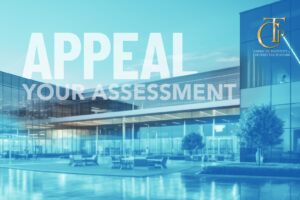Step one on the journey to claiming the Employee Retention Credit is to steer clear of the “ERC mills” blasting their messaging across social media, radio ads, and roadside billboards. Their grand promises state things like: “Get $26,000 per employee through the Employee Retention Credit!” Unfortunately, these mills provide very few details on how to ensure you actually qualify for the tax credit.
After making sure your business counts as an eligible employer, the next step is to determine if you satisfy one of three tests:
- A significant decline in gross receipts,
- A full or partial suspension of business operations, or
- A recovery startup business (applicable only for the third and fourth quarters of 2021)
Busy entrepreneurs may have difficulty finding the time to look into the fine print for each of these tests. That’s why working with a Certified Tax Planner can be so beneficial for business owners who believe they may qualify for this credit.
Read on for an overview of these three ERC qualifying tests.
Test #1: Significant Decline in Gross Receipts
The first step here is to ensure we have the right definition for gross receipts. Gross receipts are all of a company’s sales. This amount is not reduced by the cost of goods sold. You should not include any profits from disposing of assets or selling of assets that are not part of your primary trade or business. For example, if you decide to sell off investments to increase cash flow, that would not count towards your gross receipts. Any sales tax collected will not count either.
The “significant decline” is evaluated by comparing any three-month period to the same time period in the previous year. Even if your business income goes up by the end of that year, you may still qualify if you meet the gross receipts tests for one or more quarters that year.
The highest bar is set for 2020. To claim a significant decline in gross receipts for any quarter in 2020, you must have less than 50% of the amount tallied during that same quarter in 2019. So if you had $100 in gross receipts for the second quarter of 2019, but you only had $49 for the second quarter of 2020, you would qualify for the ERC under this rule.
The rules are different for 2021. If your gross receipts in 2021 are less than 80% of your receipts during the same quarter in 2020, you will qualify.
The three ERC tests function independently of one another, so if you meet the qualifying criteria listed here, you would not need to pass the two other tests.
Test #2: Full or Partial Suspension of Business Operations
This second test may prove a bit trickier to understand. If your business is looking to use this test as a qualifier, you must meet these two criteria:
- Your business must have been impacted by an applicable government order in your region.
- The government order must correspond to a full or partial suspension of your business operations.
The first element requires that the government order be specific to your state, county, or other local government authority. Business owners cannot simply claim that the number of customers who came to their storefront was reduced because a neighboring state had a shutdown. The mayors and county supervisors in your area must have had a governmental order in place. Examples include a mandate for non-essential businesses to close, a shelter in place order, a curfew order, or a health department order mandating changes that prevented the business from operating.
Interestingly, the order does not need to have been fully enforced. In some regions, law enforcement patrolled neighborhoods to make sure residents stayed at home for the duration of the lockdown. In other regions, the governmental order was mandated, but there may not have been enough structure and accountability in place to ensure the rules were being followed. As long as the order was officially in place, you can still qualify.
Keep in mind that public statements by politicians are not the same as governmental orders, such as a state representative going on television and urging residents to stay at home.
If this is the test you are claiming to qualify under, you will want to find documented proof of the order in your area. Check county websites, health department websites, or the homepage of your local government authority. You can use tools like the Wayback Machine to recover a copy of the website as it looked on the dates of the lockdown.
Secondly, you need to establish a clear cause-and-effect between the governmental order and the suspension of your business. Voluntary suspensions do not count, nor do suspensions because of employee absences. Supply chain disruptions also do not count if they were not directly caused by a U.S. governmental order (orders by foreign governments will not count) or if there was a suitable replacement available for your supplies.
Test #3: Recovery Startup Business
This test only applies for the third or fourth quarter of 2021. If your business began after February 15, 2020, you may qualify as a recovery startup business. According to this rule, a business has “begun” when it has started performing the activities for which it was organized. So a business that had formed in January 2020 but did not start functioning as a business until later that year may qualify under this test.
The second factor is your average annual gross receipts. The receipts you need to tally must cover the three-year period ending in the year before the calendar quarter for which you are claiming the credit. So if you are claiming a credit for April 2020, you will need to calculate your average annual gross receipts for tax years 2017, 2018, and 2019. To qualify, your average annual gross receipts for this period cannot exceed $1 million.
Summary
Take note if your business…
- first began during the COVID-19 lockdown
- was required by law to shut down its business operations, or
- saw a significant decline in sales
Any of these factors could mean that you qualify for the Employee Retention Credit. The overview provided above only scratches the surface of what business owners need to know. The most reliable way to determine if your business qualifies for the ERC is to sidestep the showy advertisements of those ERC mills and seek the advice of a trained tax professional.
Take the next step in determining if you qualify by reaching out to a Certified Tax Planner today.





